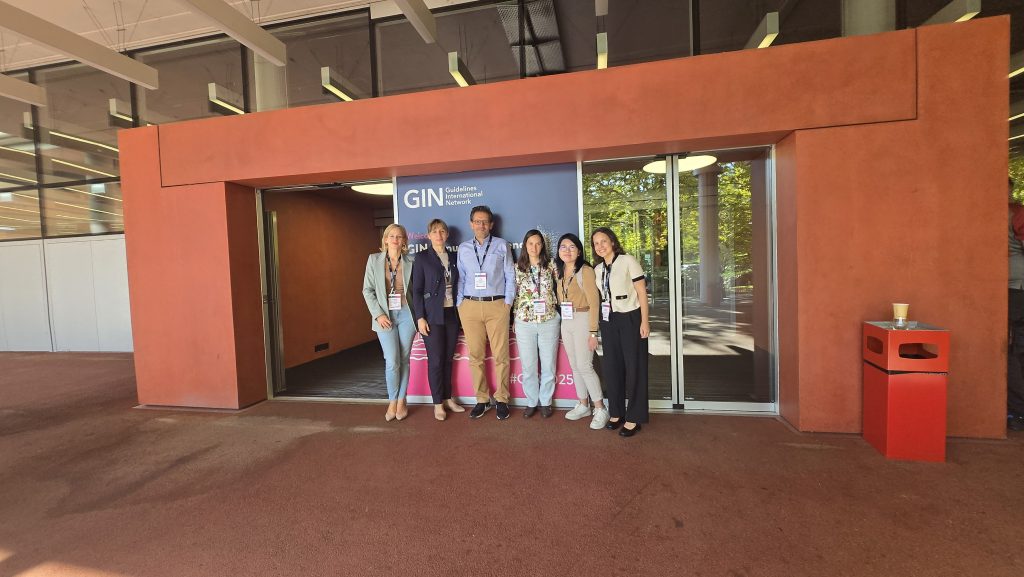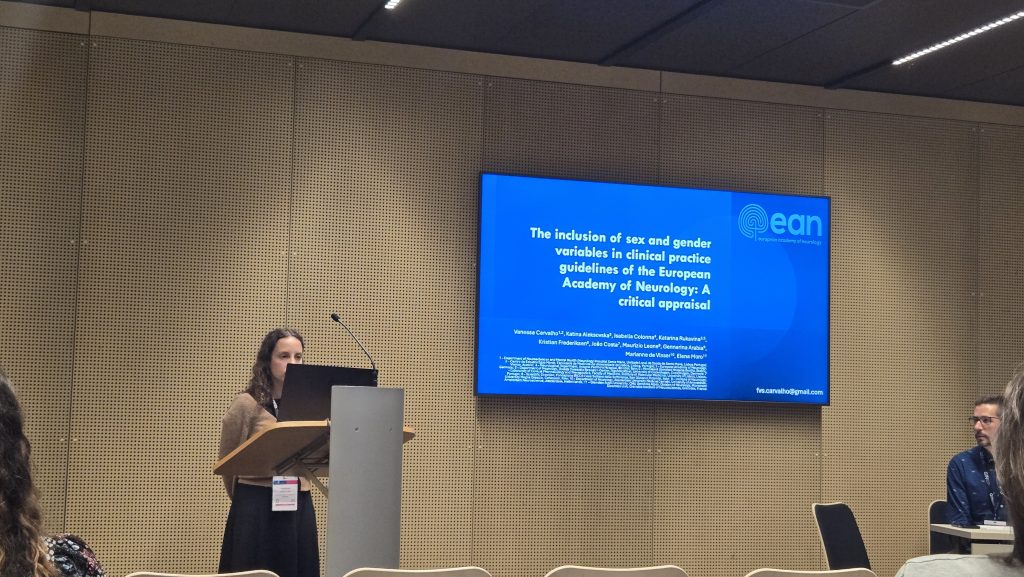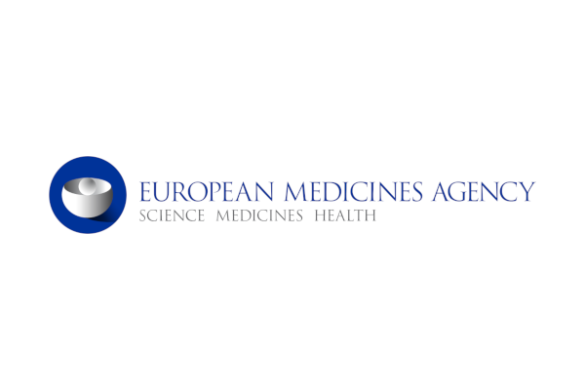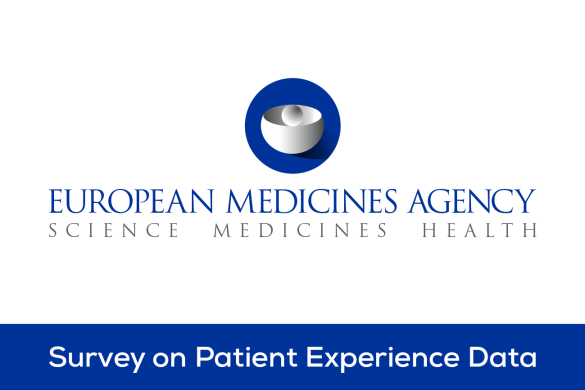On 16-19 September, the Guidelines International Network (GIN) Conference 2025 took place in Geneva, Switzerland.
GIN 2025 is a gathering of global leaders, methodologists, health policy makers, and clinicians committed to improving health via evidence-based guidelines. The theme for this year’s event, ‘Innovation and Partnerships for Health in All Policies,’ captures the spirit of work being done in evidence-based guideline development and broader health policy integration.
For the EAN Guideline Production Group (GPG), GIN 2025 is a chance to learn from global best practices, strengthen methodological rigour, and explore new approaches in production and implementation. It is also an opportunity to collaborate internationally and increase the visibility and impact of EAN guidelines beyond neurology.
This year, in particular, the GPG had the chance to share with the attendees three of its projects at the Conference:
Dr Vanessa Carvalho presented The inclusion on sex and gender variables in clinical practice guidelines of the EAN: A critical appraisal, where she discussed the results and prospects, following a sex and gender analysis on published EAN guidelines.
Dr Teia Kobulashvili and Dr Katina Aleksovska presented Development of EAN guidance for the production, dissemination, and implementation of patient summaries of clinical practice guidelines, where they talked about the methodology of the ongoing project of the GPG on how to develop patient summaries for its guidelines.
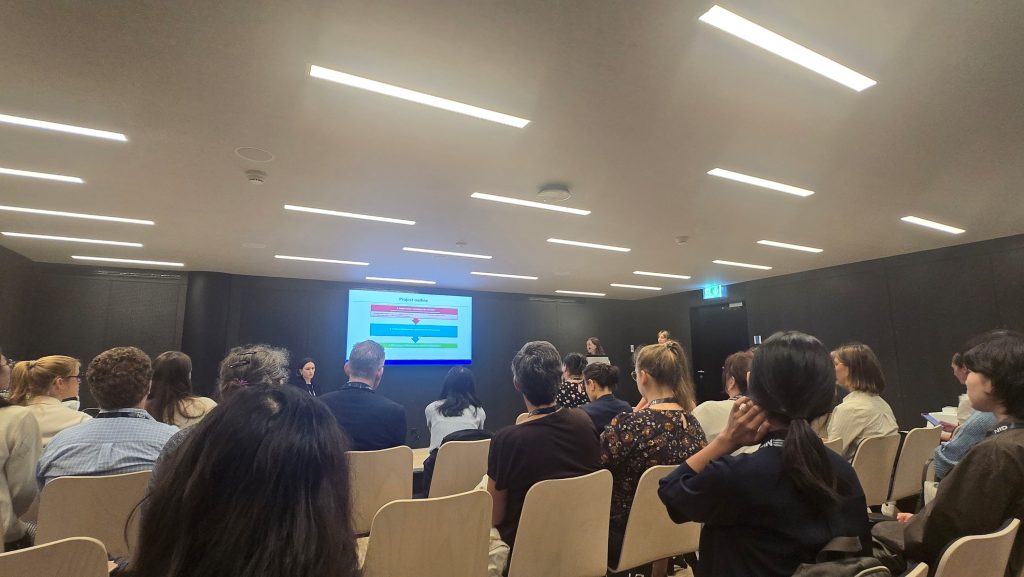
Lastly, Dr Katarina Rukavina presented From the Oven to the Table: A Scoping Review on the Roadmap for the Implementation of Neurological Guidelines, where she presented the implementation roadmap for EAN guidelines, following a scoping review conducted on the implementation of neurological guidelines in Europe.
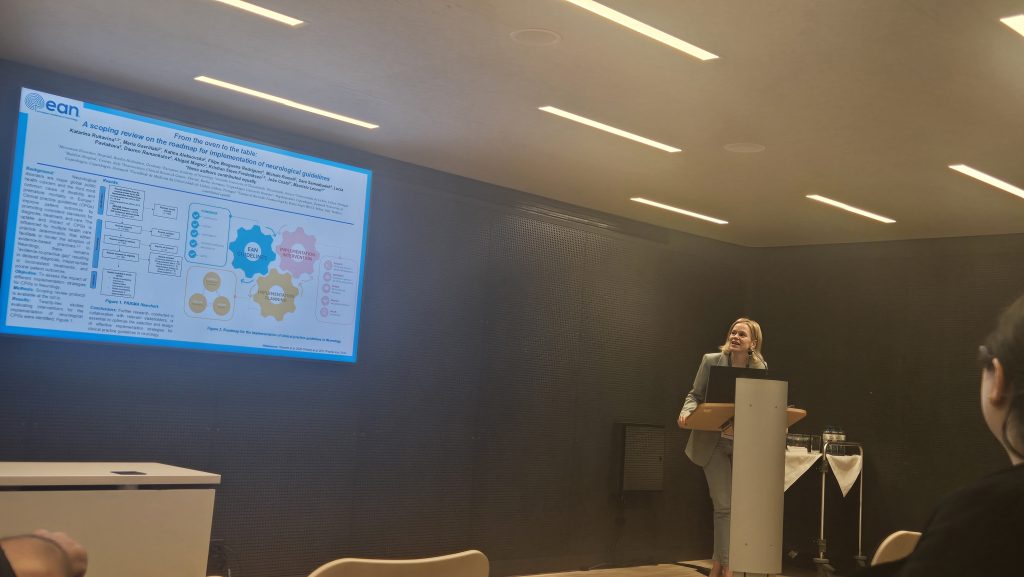
These presentations mark just the beginning; the foundation for larger initiatives that the GPG is actively developing. The GPG remains dedicated to continuously enhancing the effectiveness and impact of EAN guidelines, particularly in clinical practice. We look forward to the progress ahead and to sharing the next steps of this important work.
